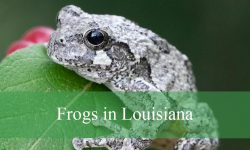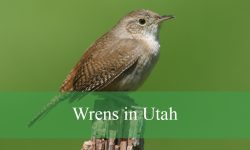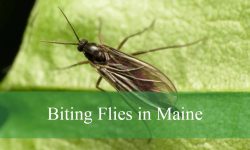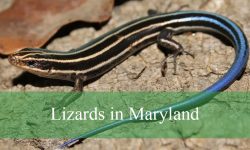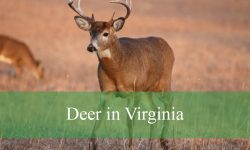In Colorado’s varied landscapes, from mountain valleys to bustling cities, raccoons have established themselves as one of the most familiar wild animals. Their masked faces, striped tails, and curious behavior make them easily recognizable, yet many people only encounter them during brief nighttime sightings. Despite their reputation as clever scavengers, raccoons play an important role in local ecosystems, contributing to seed dispersal and insect population control.
Raccoons in Colorado belong primarily to the subspecies known as the Rocky Mountain Raccoon, which has adapted well to the state’s colder climates and diverse environments. They are remarkably resourceful, finding ways to thrive in natural woodlands, agricultural areas, and even suburban neighborhoods. Because of their intelligence and adaptability, raccoons are able to live near people while still maintaining much of their wild behavior.
This detailed guide explores the raccoons of Colorado, focusing on how to identify them, their habits and behaviors, and the habitats where they are most often found. By understanding more about these intriguing mammals, residents and visitors can gain a deeper appreciation for their role in Colorado’s wildlife community.
Identification of Raccoons in Colorado
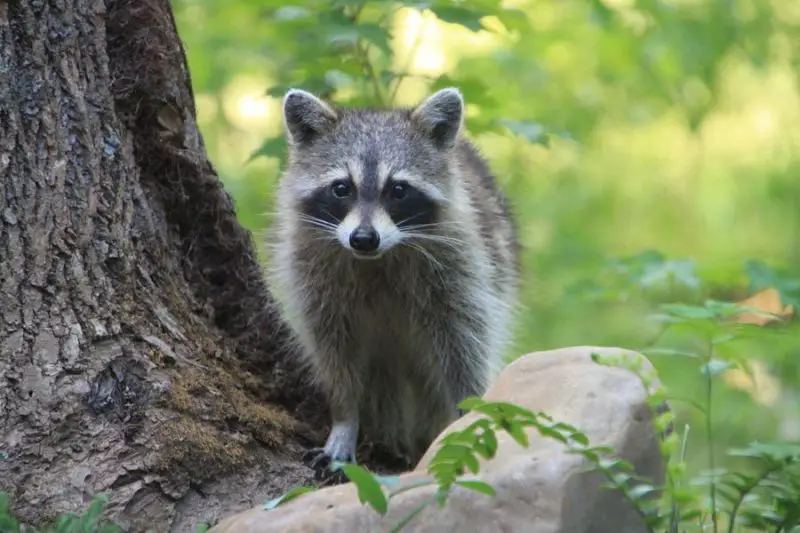
General Appearance
Raccoons are medium-sized mammals with a stocky build, rounded ears, and a distinctive black mask across their eyes. In Colorado, adults typically weigh between 10 and 25 pounds, although some larger individuals may reach up to 30 pounds depending on food availability. Their fur is dense and grayish-brown, providing insulation against colder mountain weather.
The tail is one of their most recognizable features, marked by alternating dark and light rings that usually number five to seven. Their front paws resemble small human hands, which allow them to manipulate objects, open containers, and search for food with surprising dexterity. When observed up close, raccoons often appear alert, with their forward-facing eyes shining brightly in artificial light at night.
The Rocky Mountain Raccoon Subspecies
Within Colorado, the most common form is the Rocky Mountain Raccoon, a regional subspecies of the common raccoon. This variant tends to be slightly larger and has thicker fur than raccoons found in warmer parts of the United States. The heavier coat helps them survive cold winters in the foothills and mountains. Their body shape is sturdy, with powerful legs adapted for climbing trees, swimming, and traveling long distances.
Despite minor differences from other raccoon populations, the Rocky Mountain Raccoon shares the same key identifiers: a masked face, ringed tail, and remarkable adaptability. These traits make it easy to distinguish raccoons from other small mammals that share their range, such as ringtails, skunks, and foxes.
Differences from Similar Animals
In Colorado, ringtails are sometimes mistaken for raccoons due to their striped tails, but they are actually smaller, more slender, and belong to a different species within the raccoon family. Skunks, while also nocturnal and black-and-white in color, lack the masked face and ringed tail. Coyotes and foxes may also be active in similar areas, but their body shape and behavior are very different. Recognizing these distinctions is important for correct identification when observing wildlife.
Habits and Behavior of Raccoons in Colorado
Nocturnal Lifestyle
Raccoons are primarily nocturnal, meaning they are most active during the night. In Colorado, they usually begin foraging around dusk and continue their activities until dawn. Their sharp eyesight, sensitive whiskers, and exceptional sense of touch help them navigate in the dark. During the daytime, raccoons retreat to dens located in hollow trees, abandoned burrows, barns, or even attics when living near humans.
Their night activity often brings them into neighborhoods, where they search through garbage bins, pet food bowls, and compost piles. While this behavior sometimes causes conflicts with people, it is a natural extension of their scavenging lifestyle. They are opportunistic feeders and rarely turn down an easy meal.
Diet and Foraging
Raccoons in Colorado maintain an omnivorous diet, eating both plant and animal matter. In natural settings, they consume acorns, berries, fruits, insects, frogs, and crayfish found along rivers and streams. In agricultural areas, they may raid cornfields or feed on fruit orchards, particularly during the harvest season. Their adaptable diet is one reason they have successfully expanded their range across the state.
In suburban or urban environments, raccoons readily take advantage of human-provided food sources. This includes pet food left outside, unsecured trash, and bird feeders. Their skillful hands and problem-solving abilities often allow them to access food sources that other animals cannot reach. This adaptability is part of what has made them so successful in Colorado’s towns and cities.
Social Structure and Communication
Raccoons are generally solitary animals, especially adult males, who defend large territories that may overlap with several females. Female raccoons are more likely to tolerate each other’s presence, particularly when raising young. Communication occurs through vocalizations, body language, and scent marking. They are known to produce a wide range of sounds, from hisses and growls to softer chattering noises when interacting with their young.
During the breeding season, which usually occurs in late winter, males travel widely to find mates. Females raise their kits alone, nurturing them in safe dens until the young are ready to venture out. By midsummer, young raccoons begin exploring with their mother, learning how to forage and survive independently.
Seasonal Behavior
Colorado’s climate plays an important role in raccoon behavior. In winter, raccoons do not hibernate but may enter a state of torpor, remaining inactive for extended periods during severe cold or heavy snow. They emerge during warmer spells to forage before retreating again. This seasonal rhythm allows them to conserve energy while still surviving harsh weather conditions in mountainous regions.
Where Raccoons Live in Colorado
Natural Habitats
In Colorado, raccoons are commonly associated with riparian zones, where rivers, streams, and wetlands provide abundant food and cover. They are skilled swimmers and often search for crayfish, frogs, and aquatic insects along the water’s edge. Forested areas, especially those with hollow trees, offer excellent denning sites. The foothills and lower mountain regions also provide suitable habitats, where raccoons take advantage of both woodland shelter and nearby agricultural fields.
Agricultural landscapes across the eastern plains of Colorado support healthy raccoon populations as well. Fields, irrigation ditches, and barns provide both food and denning opportunities. While farmers sometimes view raccoons as pests due to crop damage, they also help by consuming insects and rodents. Their ability to exploit multiple food sources makes them resilient across diverse habitats.
Urban and Suburban Environments
In recent decades, raccoons have become increasingly common in suburban and urban settings. Cities like Denver, Boulder, and Colorado Springs host large raccoon populations that thrive on human-provided food. Parks, golf courses, and residential neighborhoods with mature trees give raccoons shelter while garbage bins and bird feeders offer reliable meals. Their intelligence and curiosity make them well-suited to navigating these human-dominated landscapes.
Although urban raccoons may seem less wild due to their frequent encounters with people, they retain all the instincts of their rural counterparts. They still climb trees to escape predators, wash food in water when possible, and retreat to hidden dens during the day. This blending of wild and urban life is a hallmark of raccoon adaptability.
Distribution Across the State
Raccoons are found throughout Colorado, from the plains to the foothills and mountain valleys. They are most abundant in areas with access to water, such as river corridors, reservoirs, and irrigation systems. Along the Front Range, their populations are particularly strong due to the combination of natural habitat and urban development. In higher elevations, raccoon numbers may decline because of harsher winters and limited food sources, but they are still occasionally observed in mountain towns.
Across the eastern plains, raccoons remain common, taking advantage of farmland, shelterbelts, and water channels. Their statewide presence reflects their remarkable ability to adapt to both natural and human-modified environments. Whether in rural woodlands or city neighborhoods, raccoons have found a way to thrive in Colorado.
Human Interactions with Raccoons in Colorado
Benefits and Ecological Role
Raccoons contribute to Colorado’s ecosystems by dispersing seeds through their droppings, which helps maintain plant diversity. Their appetite for insects, crayfish, and rodents provides natural pest control. In riparian zones, they play a role in balancing aquatic ecosystems by preying on small creatures along the water’s edge. Despite being labeled as nuisances in some areas, raccoons perform valuable ecological services.
Conflicts and Challenges
Conflicts arise when raccoons raid garbage, damage crops, or nest in attics and outbuildings. In urban environments, they sometimes become bold around humans, leading to property damage and occasional health concerns. Raccoons can carry diseases such as rabies or leptospirosis, though incidents are relatively rare. Residents are encouraged to secure trash bins, bring pet food indoors, and block entry points to prevent unwanted encounters.
Coexisting with Raccoons
Wildlife experts recommend coexistence strategies rather than removal. Preventing access to food sources is the most effective way to reduce conflicts. Motion-activated lights, secure lids on garbage cans, and closing off potential den sites help deter raccoons from settling too close to human homes. Observing raccoons from a distance allows people to enjoy their fascinating behaviors without encouraging dependence on human food.
Conclusion
Raccoons in Colorado represent one of the state’s most adaptable and recognizable wild mammals. From riparian zones and agricultural lands to suburban neighborhoods and city parks, they have carved out a niche in nearly every type of environment. Their masked faces and ringed tails are unmistakable symbols of nocturnal wildlife, and their intelligence and resourcefulness make them both admired and misunderstood.
Understanding how to identify raccoons, appreciate their habits, and recognize their preferred habitats is key to coexisting peacefully with them. While conflicts with humans do occur, raccoons also provide ecological benefits that contribute to the balance of Colorado’s natural systems. With knowledge and proper management, residents can enjoy the presence of raccoons while minimizing potential problems.
As Colorado continues to grow and change, raccoons will remain a constant presence—wild neighbors that remind us of the resilience of nature in adapting to human-altered landscapes.
FAQs about Raccoons in Colorado
How can you identify raccoons in Colorado?
Raccoons can be identified by their black “mask” of fur around the eyes, bushy ringed tails, and grayish-brown coats. In Colorado, they are often larger and have thicker fur compared to raccoons in warmer states. Their dexterous front paws, which look like small human hands, also make them easy to recognize.
Where are raccoons most commonly found in Colorado?
Raccoons are widespread across Colorado and thrive in riparian zones, forests, agricultural areas, and urban neighborhoods. They are especially common along rivers and lakes, in the foothills, and around towns such as Denver, Boulder, and Colorado Springs where food and shelter are plentiful.
What do raccoons eat in Colorado?
Raccoons are omnivores, eating fruits, nuts, insects, frogs, crayfish, and small mammals in natural areas. In agricultural zones, they may feed on corn or fruit crops. In cities and suburbs, raccoons often search for food in garbage cans, pet dishes, and bird feeders, showing their highly adaptable diet.
Are raccoons dangerous to humans in Colorado?
Raccoons are generally shy and avoid humans, but they can become bold in urban settings if they find easy food sources. They are not usually dangerous, though they can carry diseases such as rabies or leptospirosis. It is best to observe raccoons from a distance and never attempt to feed or handle them.
Do raccoons hibernate during Colorado winters?
Raccoons in Colorado do not hibernate, but they may enter periods of torpor during extremely cold or snowy weather. This means they stay in their dens for several days at a time to conserve energy. When temperatures warm, they emerge to forage before returning to shelter.
How can residents prevent raccoon problems around their homes?
The best way to prevent raccoon issues is by removing food sources. This includes securing trash cans with tight lids, bringing pet food indoors, and protecting bird feeders. Blocking access to attics, chimneys, and crawl spaces also helps keep raccoons from nesting in buildings.

